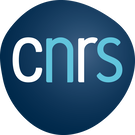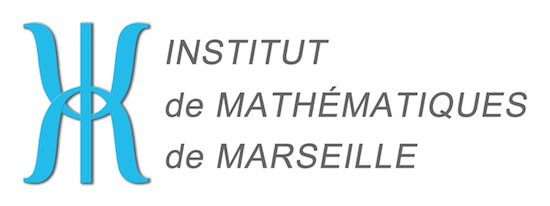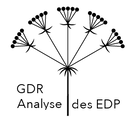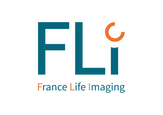Mathematical and Numerical Approaches for Multi-Wave Inverse Problems
Approches mathématiques et numériques pour les problèmes inverses de type multi-ondes
1 – 5 April 2019
|
Scientific Committee
Comité scientifique Aria Abubakar (Schlumberger) |
Organizing Committee
Comité d’organisation Larisa Beilina (University of Gothenburg) |
|
Inverse problems have been a topic of interdisciplinary interest for many years, whether for mathematicians, applied mathematicians, physical scientists or engineers. Considerable progress has been achieved in recent years in the development of innovative ever improving solution techniques based on new theoretical tools, new approximations, as well as on new optimization techniques. In the inverse problems community, the current scientific interests are focused towards achieving better contrasted images, with higher spatial resolution and with quantitative contents, such as functional imaging in biomedical applications.
In the inverse problems community, the current scientific interests are focused towards achieving better contrasted images, with higher spatial resolution and with quantitative contents, such as functional imaging in biomedical applications. As a consequence, more and more multi-modal, multi-wave or hybrid systems are currently being proposed and/or being used routinely. Mathematically, solving these inverse problems is even more complicated because they require a coupling, that can be soft or hard, between a set of partial differential equations not necessarily of the same nature (elliptic, hyperbolic, …). This leads to problems in terms of uniqueness, stability but also in terms of control which remain still little explored. In terms of numeric, these systems of PDEs may lead to large discretized domains, with large number of degrees of freedom, which must be adapted according to the wavelength of the considered waves. One of the main objectives of this conference will be exchange of ideas and tools between different scientific communities, specially to favor the discussions between researchers more involved in theoretical aspects of inverse problems with the ones more interested in numerical implementation of these problems. Thus, this conference aims not only to provide an assessment of the state of the art on the tools currently proposed, but to serve as a forum for interchanging ideas on possible improvements and cross-fertilization. Furthermore, this conference gathers a number of researchers of international renown strongly involved in this multi-modal applications. Hence, the conference will stimulate applying of new theoretical and numerical tools for the solution of real-life problems as well as propose new systems for their solution on the basis of theoretical understanding. |
Les problèmes inverses sont un sujet d’intérêt interdisciplinaire depuis plusieurs années aussi bien pour les mathématiciens, les physiciens que les ingénieurs. Des progrès considérables ont été réalisés dans le développement de solutions techniques innovantes basées sur de nouveaux outils théoriques, de nouvelles méthodes d’approximation ainsi que de nouvelles approches d’optimisation.
Dans la communauté des problèmes inverses, les principaux pôles d’intérêts concernent l’amélioration du contraste des images avec de meilleures résolutions spatiales et de meilleures banques de données comme en imagerie fonctionnelle dans le domaine bio-médical. En conséquence, de plus en plus de systèmes multi-modaux, multi-ondes ou hybrides sont proposés et/ou utilisés régulièrement. Mathématiquement parlant, la résolution de ces problèmes inverses s’en trouve plus compliquée car elle nécessite de tenir compte de couplages, forts ou faibles, entre des systèmes d’équations aux dérivées partielles (EDP) qui, de plus, ne sont pas nécessairement de même nature. Cette situation conduit à des problèmes d’unicité, de stabilité mais aussi de contrôle qui restent à ce jour encore peu abordés. En terme d’approche numérique, ces systèmes d’EDP entrainent des problèmes importants de discrétisation de domaines avec de nombreux degrés de liberté qui doivent être adaptés en tenant compte des longueurs d’ondes utilisées. Un des objectifs de cette conférence sera précisément de permettre des échanges au sein de différentes communautés et en particulier de favoriser les discussions entre des chercheurs plus impliqués dans les aspects théoriques et d’autres plus intéressés par les approches numériques. Les objectifs de cette conférence ne se limitent pas à proposer un panorama de la recherche sur les outils actuellement utilisés. Elle doit également permettre de constituer un forum pour échanger sur les améliorations et les nouvelles idées. Cette conférence regroupe d’ailleurs de nombreux chercheurs de renom au niveau international très fortement impliqués dans ces applications multi-modales. Elle doit favoriser l’application de nouvelles approches et techniques numériques mais aussi l’émergence de nouveaux modèles s’inspirant des avancées théoriques. |
Giovanni S. Alberti (University of Genoa) Combining Runge approximation and Whitney embedding theorem in hybrid imaging
Simon Arridge (University College London) Dynamic High Resolution PhotoAcoustic Tomography
Jin Bangti (University College London) Mathematical modeling in magnetic particle imaging
Cédric Bellis (CNRS/LMA Marseille) Direct and inverse homogenization: Integral equations and optimization methods
Eric Bonnetier (Université Grenoble Alpes) A stability estimate for an inverse electroseismic problem
Elie Bretin (INSA Lyon) About Photoacoustic tomography Imaging : case of non Dirac delta source approximation and determination of an optimal sensors location
Christian Clason (University of Duisburg-Essen) Multibang regularization of a coefficient inverse problem for the wave equation
Michele Di-Cristo (Politecnico di Milano) Stable determination of an inclusion in a layered medium
Peter Elbau (University of Vienna) Exploring Different Measurement Setups for Combining Photoacoustic and Optical Coherence Tomography
Josselin Garnier (Ecole polytechnique) Imaging through random media by speckle intensity correlations
Francisco Romero Hinrichsen (University of Graz) Dynamical super-resolution with applications to Ultrafast ultrasound imaging
Barbara Kaltenbacher (University of Klagenfurt) Iterative regularization methods for vibro-acoustography
Peijun Li (Purdue University) Inverse Source Problems for Wave Propagation
Shumin Li (University of Science and Technology of China) An inverse problem of determining the mass density at steady state and the thermal conductivity in the coupled quantitative thermo-acoustic equations by boundary data
Felix Lucka (Centrum Wiskunde & Informatica, Amsterdam) On Challenges in Quantitative Photoacoustic Tomography and Ultrasound Computed Tomography
Srirang Manohar (University of Twente) Current Trends in Photoacoustic Breast Imaging
Kati Niinimaki (Université Paris-Sud) Parameter choice methods for regularization in sparse tomography
Sarah Patch (University of Wisconsin) Multiwave Phenomenon in Imaging and Particle Therapy
Yannick Privat (Université de Strasbourg) About Photoacoustic tomography Imaging : case of non Dirac delta source approximation and determination of an optimal sensors location
Otmar Scherzer (University of Vienna) Multi-Modal OCT and PAT for Elastography
John C. Schotland (University of Michigan) Coherent Acousto-optic Imaging
Tanja Tarvainen (University of Eastern Finland) Modelling of errors in photoacoustic tomography
Masahiro Yamamoto (University of Tokyo) To be announced














